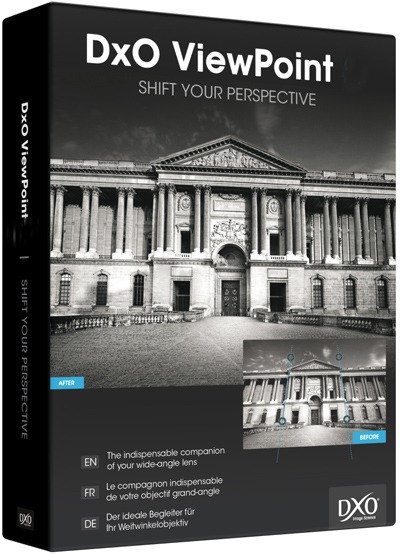

It seems pretty unlikely that anyone who needs ViewPoint 4’s advanced corrections will be working with JPEGs, so this program makes much more sense as a plug-in or external editor for software that already takes care of RAW processing. It can’t open RAW files (nor indeed iPhone HEIC files). ViewPoint 4 can only open JPEG or TIFF images. The only difference is that the standalone mode displays a folder directory tree in the left sidebar so that you can locate and browse the images you want to adjust.īut there is a somewhat unwelcome surprise waiting here. ViewPoint 4 is very easy to use, whether you launch it in standalone mode or as a plug-in. The difference with this workflow is that you can go back later and make changes. Image credit: Rod Lawton This is the Miniature tool used within PhotoLab. Otherwise, it makes permanent changes to your images. In fact using it within PhotoLab is the only way to use it non-destructively. Interface and usability ViewPoint 4 integrates seamlessly with the PhotoLab interface. Other new features in ViewPoint 4 include the ability to flip and rotate images, and the crop and rotate functions are now combined for easier operation. It’s not unlike Photoshop’s Liquify tool. There’s a third feature, which is new in ViewPoint 4 – a ReShape tool which enables you to make localized geometric corrections by moving the nodes of a mesh overlay. It makes real world scenes look like miniature models, though your viewpoint and subject need to be right for the illusion to be complete. This creates a narrow plane of sharp focus with blur above and below. The next unique feature (within a set of perspective correction tools) is the digital equivalent of the ‘tilt’ function of a perspective control lens. These lenses render straight lines as straight, but artificially elongate objects near the edge of the frame, and this is especially noticeable with human faces and figures. The first of ViewPoint’s unique features is its correction of Volume Deformation, a feature of ultra-wide ‘rectilinear’ lenses.

DXO VIEWPOINT SETTINGS LENSES PLUS
The perspective correction tools will be familiar from other programs, with a vertical convergence tool, a horizontal convergence tool and a square tool for correcting rectangular objects and – plus an 8-point tool for making verticals and horizontals parallel for subjects that don’t have a conveniently rectangular outline. It’s especially noticeable with people and faces. Image credit: Rod Lawton ViewPoint 4 tackles an issue specific to ultra-wide lenses – Volume Deformation – correcting the artificial elongation you tend to get with objects near the edge of the frame. Image credit: Rod Lawton With the new ReShape tool you can correct perspective issues in smaller details using a grid of movable control points. Image credit: Rod Lawton As well as simulating the effect of perspective control (‘shift’) lenses, ViewPoint 4 can also simulate the shallow depth of field ‘miniature’ effect of a ’tilt’ lens. It corrected both the horizontal and vertical perspective in this photo with a single click. ViewPoint 4’s automatic perspective corrections are excellent. The other is that it does other things that these programs can’t do. One is that ViewPoint 4 just might do a better job. So why would you pay extra to get software that does a job you can do already? Even DxO PhotoLab 6 now has these as standard. Anyone who uses any of these programs already mentioned (apart from Elements) will already have perspective correction tools in their host software. It can also be used as an external application with Capture One and other photo-editors that support ‘round-tripping’ with external editors. ViewPoint 4 also works as a plug-in for Photoshop, Photoshop Elements and Lightroom Classic. ViewPoint 4 can be used as a standalone program, complete with its own image browser, but it can only work with TIFFs and JPEGs, not RAW files. ViewPoint 4 can be used as a standalone application, but also integrates with DxO PhotoLab 6 to add a whole new panel and bring its geometric corrections into PhotoLab’s non-destructive workflow. It uses DxO’s lens correction profiles to automatically fix lens distortion, as required, but its main trick is to straighten horizons, fix converging verticals, correct horizontal convergence and – in this latest version – apply local geometric corrections with a new node-based ReShape warping tool. DxO ViewPoint 4 is a program devoted specifically to lens and perspective corrections.


 0 kommentar(er)
0 kommentar(er)
